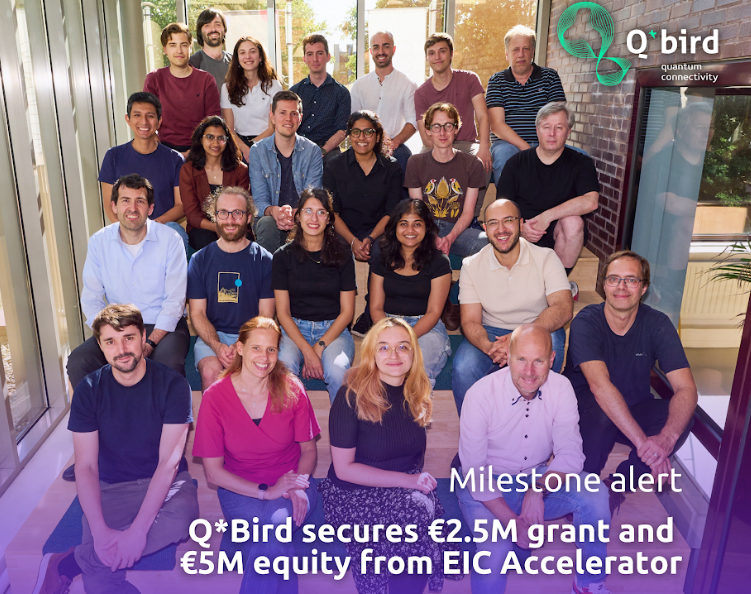Insider Brief
- A new report from Innovate UK offers a detailed review of the possibilities and challenges of emerging quantum technologies in healthcare.
- The report highlights advancements such as wearable brain scanners and non-invasive cancer detection using quantum entanglement, illustrating efforts to improve diagnostic capabilities and make healthcare more efficient and less invasive.
- The UK aims to integrate quantum technology across the NHS by 2030, although the report acknowledges the complexities of regulatory compliance and clinical adoption.
- Image: Quantum for Life report expected to form part of discussions at Innovate UK’s National Quantum Technologies Showcase, which returns on November 8.
The United Kingdom is ramping up efforts to integrate quantum technology into its healthcare sector, according to a just-released report, Quantum For Life. The report was drawn up by Innovate UK, the UK’s innovation agency.
According to the report, over the past six years, Innovate UK has poured more than £220 million into quantum projects, with over £14 million allocated specifically for healthcare applications. These investments are part of a broader national strategy aimed at leveraging the country’s strengths in emerging technologies to enhance medical diagnostics, treatment options, and operational efficiency.
The report aims to give those in the health and medicine field a look at the current landscape — and future wave of quantum tech — to understand its possible effects on the field.

The team writes: “The objective of this report is to give those working in healthcare and life sciences an understanding of what quantum technologies can do now, and what they will be capable of in the near future. It is shown that these devices can broadly be separated into two categories: quantum enhanced technologies, which improve upon current practices, and transformative quantum technologies, providing completely new approaches.”
Expanding Quantum Sensing and Imaging Capabilities
A significant focus of efforts today lies in quantum sensing and imaging technologies, the report states. Researchers and companies are developing advanced photonic, atom-based, and diamond sensors to enhance diagnostic capabilities in the life sciences sector.
One example is the use of infrared multi-spectral imaging combined with quantum entanglement to detect breast cancer at earlier stages. The approach, spearheaded by photonic sensing firm Digistain, aims to shorten diagnosis timeframes and increase accuracy. Their new product, EntangleCam, uses a technique called spontaneous parametric down-conversion to generate entangled photons. This method allows for the detection of cancerous cells without the need for invasive procedures or fluorescent dyes, offering a less disruptive and quicker diagnostic alternative.
Wearable brain scanners are also emerging from this push. Cerca Magnetics, a spin-out from the University of Nottingham, has developed optically pumped magnetometers (OPMs) for wearable magnetoencephalography (MEG) systems. These devices, designed to scan the brain for neurological conditions such as epilepsy, Parkinson’s disease, and dementia, are smaller, lighter and more flexible than traditional cryogenic MEG systems.
According to the report: “Tests are currently performed in magnetically shielded rooms costing up to £700,000 to exclude external magnetic fields that would disrupt the measurements. The cost of Cerca Magnetics’ OPM-based device, including the shielded room, is roughly half that of a conventional MEG device. Shielded rooms are being further developed to make them easier to install in hospitals and other environments, such as by making the shielding thinner.”
Cerca Magnetics has already installed systems at The Hospital for Sick Children in Toronto and Young Epilepsy in Surrey. The technology is currently being tested in shielded rooms to minimize external magnetic interference, with further studies planned to expand its use in clinical environments. The company has secured funding for clinical trials aimed at refining these wearable devices, with commercial deployment expected within the next few years.
Innovating in Drug Discovery
Quantum computing is another area where the UK seeks to gain a competitive edge. By simulating chemical interactions and protein folding more effectively than classical computers, quantum systems hold promise for revolutionizing drug discovery. The UK’s National Quantum Strategy outlines plans to invest in the development of quantum-enabled tools for healthcare supply chain management and optimization, promising efficiency gains for hospitals and clinics.
These quantum computing applications focus not only on drug discovery but also on refining drug development pipelines through simulations that could improve drug efficacy and reduce production costs. Experts suggest that the technology could soon allow researchers to design custom molecules and simulate their interactions in a fraction of the time required by current methods.
Commercializing Quantum Healthcare
A shift is underway to commercialize quantum-enhanced devices for widespread clinical use. Companies such as Digistain and Cerca Magnetics are leading the charge, turning lab concepts into market-ready technologies. Innovate UK and the UK government are providing substantial support to bridge the gap between research and commercial application.
The government’s long-term goal is to integrate quantum technology across the National Health Service (NHS) by 2030. The National Quantum Strategy commits to ensuring that “every NHS Trust will benefit from quantum sensing-enabled solutions, helping those with chronic illness live healthier, longer lives through early diagnosis and treatment.”
This ambitious target is backed by current Innovate UK project timelines, which align with the 2025-2029 roadmap for commercial medical imaging applications using quantum sensing.
Several projects are already testing quantum technologies in clinical settings. One example is METLASE’s effort to develop a compact and affordable medical scanner using OPMs. The device is being designed for use in general practice surgeries, offering the potential to bring high-quality imaging capabilities beyond large hospitals. The initiative, supported by Innovate UK, aims to complete technical feasibility studies before moving toward regulatory approval.
“This emerging industry still faces many challenges. Devices must be robust and suitable for a clinical environment, and must pass through a rigorous regulatory process to ensure they are safe,” the team writes. “Depending on how a technology interacts with the patient, clinical adoption can take years. Fortunately, the UK industry has support to overcome these challenges and move to commercialisation. This is being delivered through the third of the national quantum strategy missions that specifically focuses on quantum sensing in healthcare.”
Overcoming Challenges
While the promise of quantum technology in healthcare is significant, challenges remain. The development of devices suitable for clinical environments is complex, and regulatory hurdles are substantial. Technologies like quantum sensors and magnetometers must be tested rigorously to ensure safety and efficacy. The clinical adoption of these technologies may take years, depending on how they interact with patients and comply with regulatory standards.
Nevertheless, industry support is robust, the report suggests. The UK’s National Quantum Strategy includes a dedicated mission to advance quantum sensing in healthcare, aiming to provide a technology pipeline that ensures these innovations transition smoothly from the lab to clinical practice. The mission prioritizes enhancing brain imaging and cancer detection capabilities and commits to establishing widespread deployment of these technologies within the NHS.
Future Directions
The UK government and Innovate UK’s investments extend beyond short-term projects. Long-term funding is set to support the growth and deployment of quantum-enhanced medical imaging systems, drug discovery platforms, and wearable health monitoring technologies. Projects in this space include quantum-enabled blood diagnostics for more accurate cancer treatment management, and advanced imaging systems that use quantum dots to improve X-ray imaging capabilities.
The quantum sector also aims to bring faster and more accessible imaging options to the NHS, with reduced costs and higher performance metrics compared to current systems. Initiatives like the collaboration between Quantum Solutions and AY Sensors to develop next-generation X-ray devices illustrate these efforts. The project, scheduled for completion in 2024, uses quantum dots to maintain image quality while reducing radiation exposure and manufacturing costs.
Collaboration and Industry Engagement
The UK’s approach emphasizes collaboration between academia, industry, and the government. The 2023 National Quantum Strategy missions outline a coordinated effort to deploy quantum technologies across healthcare settings by bringing together quantum scientists, clinicians, and industry partners. The aim is not only to innovate but also to ensure these innovations make it through the complex regulatory landscape and reach patients.
By focusing on quantum applications that enhance current diagnostic methods and create new therapeutic tools, the report paints a future where UK is positioned to be a global leader in quantum healthcare. With more companies transitioning from university labs to commercial entities, the country is witnessing a shift from research-centric projects to tangible, market-ready products designed to address the clinical needs of the NHS.
The report can provide more in-depth and technical detail. You can find it here.

















